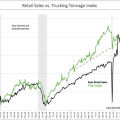Opinions expressed by Entrepreneur contributors are their own.
Evaluating your business performance every year is an important step for ongoing success. Stepping back to review financials, sales, inventory, processes and more provides valuable insights. It identifies what’s working well to double down on and spots areas needing improvement.
This checklist will guide business owners through a thorough annual evaluation. Completing each section will reveal how your business has performed financially and operationally in the past year. It will also surface opportunities to refine strategies and optimize your workflows.
1. Review your financials
The first thing you should do is just pull together all your key financial records and reports from the past year like your profit and loss statement, cash flow statements and balance sheets. Reviewing these financial reports will give you a clear picture of how much money your business has made, where your expenses are and your overall financial health. Some things to check on include:
- Are your revenues meeting your initial projections and goals? If not, what factors contributed to coming in under or over budget?
- Which products or services are your biggest money-makers? And which ones may need to be adjusted or cut?
- Where are your largest expenses? Are there any areas where costs can be trimmed to improve profits?
- Do you have a positive cash flow? Enough operating capital for upcoming seasons or expenses?
Going over your numbers thoroughly with your accountant will help you understand how the business is doing financially and what changes may be needed.
Related: 9 Must-Do End-of-Year Tasks for All Business Owners
2. Check sales and marketing efforts
Now is a great time to review your sales and marketing strategies from the past year. Look at metrics like:
- Number of total customers gained in the past year
- Sales by month to see seasonal trends
- Popular or best-selling products
- Traffic sources for websites or stores like social media, ads, email marketing, etc.
Evaluate which channels drove the most customers and revenue. And determine which generated lackluster performance. Now you can decide where to focus more marketing dollars next year. You may also want to survey customers to get their feedback.
3. Evaluate inventory levels
Checking inventory levels and sales patterns from the past year will help you avoid stock-outs of popular items or having an excess of slow sellers. Make sure to:
- Note bestsellers that may need increased stock for next season
- Identify items with low turnover that could be replaced or discontinued
- Adjust minimum and maximum inventory levels based on sales data
Properly managing your inventory will help optimize cash flow and reduce waste. The goal is to keep popular items in stock without being overloaded with dead stock.
4. Review vendor relationships
Look at payment histories, order fill rates, on-time deliveries and any issues with your key vendors from the past 12 months. For important vendors, you’ll want to ensure:
- Payment terms and prices are still competitive
- Delivery schedules meet your needs
- Quality of goods or services is consistent
Address any troublesome vendor relationships before moving forward. A post-mortem here can improve partnerships going forward.
Related: 10 Steps for All-Around Optimizing Your Business
5. Look at operational flow and processes
Evaluate the efficiency of daily operations and back-office procedures over the past year. Are there areas causing bottlenecks, delays or redundancies that could be improved? Consider:
- Streamlining workflows between departments
- Trimming unnecessary steps or paperwork
- Updating technology or equipment for better productivity
- Improving recurring task scheduling
Identifying and fixing operational problems now can translate to big savings in increased staff output or reduced costs down the road. Process optimization is important.
6. Analyze customer feedback
Now that you have a full year of customer interactions and data to look at, it’s a good idea to analyze feedback trends. Go through reviews on social media, email surveys, conversation notes and more to find:
- Common praises that should be kept up
- Frequent complaints that need addressing
- Suggestions for new products or services
Listening to what customers liked and didn’t like helps ensure you’re meeting their needs. It also points to things that need customer experience improvements. You’ll want happy repeat clients!
7. Evaluate employee performance
For any employees, review their performance metrics, sales data if applicable and feedback from managers and customers from the past 12 months. Determine if staff roles need adjusting or if certain individuals need more coaching, and training or could potentially be let go. Looking at:
- Sales and productivity goals met or missed
- Common errors or areas needing improvement
- Customer service evaluation
- Attendance, punctuality, professionalism
Ensures you have the right people and skills to support growth. Addressing issues promptly avoids future problems.
Related: The Beginner’s Guide to Local SEO — How to Boost Your Visibility and Win More Business in Your Area
8. Assess business plan and goals
Reflect on your original business plan targets for financials, growth areas, product development, operations and marketing that were set for the first year. Evaluate how you performed against each goal. Were certain goals:
- Met or exceeded with room for increase
- Nearly achieved but fell short
- Totally missed the mark
Use this assessment to update your multi-year business plan with new, ambitious yet achievable objectives. Realigning strategies and priorities based on your year-one successes and shortcomings will keep your business progressing.
Taking the time each year to thoroughly evaluate your business is worthwhile. With regular self-assessment and adaptation, you equip your company to continue enhancing services and outcomes over the long run.




